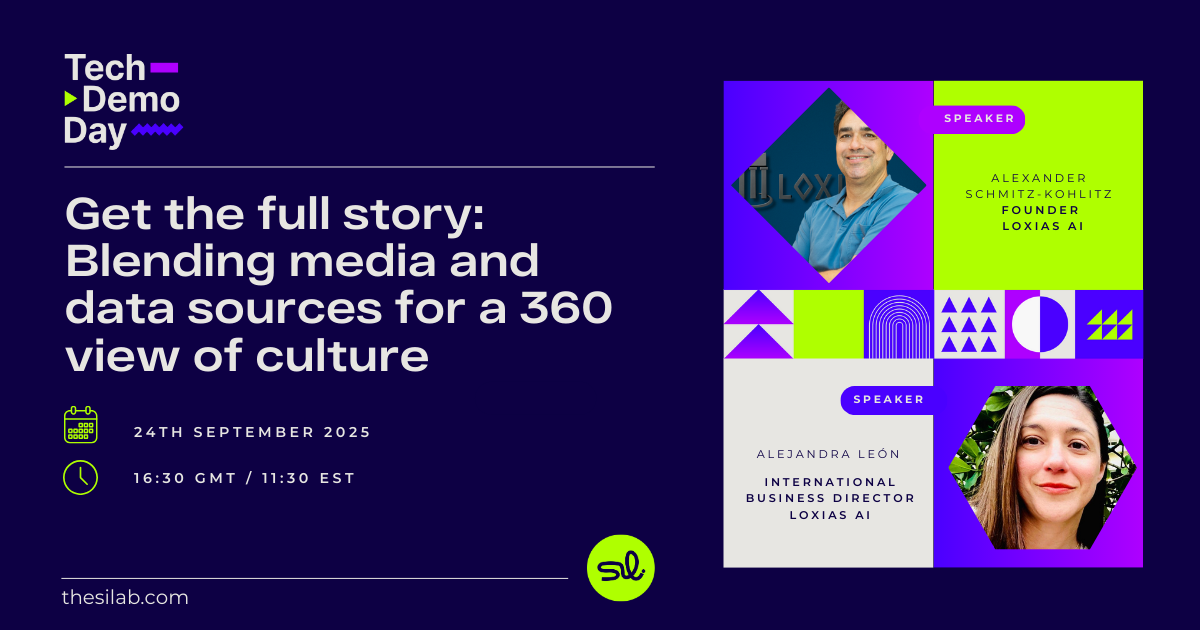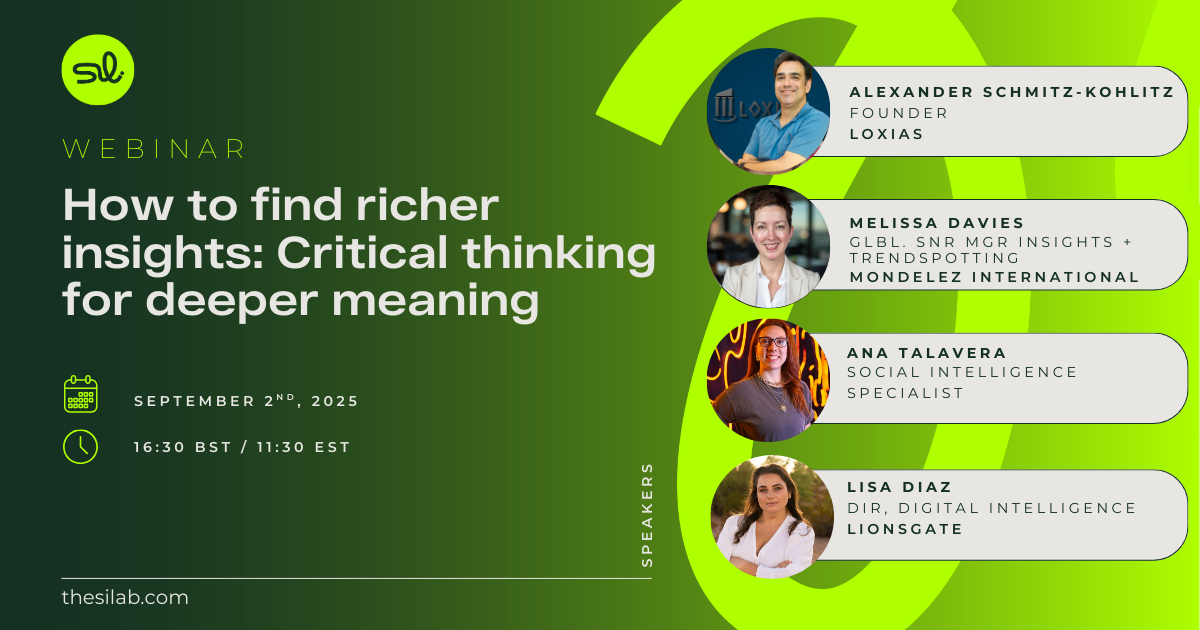
Short on social data? You’re looking in the wrong places
As of writing this blog (January 20th), it looks like TikTok lives to see another day in the US, but who knows what the status will be by the time you’re reading this!
Even though President Trump was one of the first to raise the issue of the social media platform back in 2020, it seems that he’s changed his mind, announcing on January 19th that he would try to pause its closure on his first day in office. This could, of course, change again. As Jasmine Enberg, Analyst at Emarketer points out, “He’s flip-flopped on his stance toward TikTok before, and there’s no guarantee he won’t do so again.”
All this raises an issue that’s been at the front of all social listening practitioners’ minds for quite a while now. Volatility around data access. And as social media platforms and their owners are being drawn deeper into politics, we think it’s safe to say that uncertainty will be the name of the game for a while. We just have to look at the recent announcement from Meta about changes to fact checking, conveniently-timed to welcome the return of a President famous for presenting “alternative facts.” And X’s owner, Elon Musk, who literally funded the 47th President of the US’s election campaign.
If data access is reliant on the whims of a few powerful people who could change their minds every four years, then we need to find a more sustainable solution to the data challenge.
Maybe the solution is that we should care less about them.
We’re not suggesting that you should ignore the biggest social media platforms in the world. Not completely, anyway. But it’s worth thinking about how valuable they really are to your work.
Does size really matter?
It’s often said that social listening is like having access to the world’s largest focus group, and platforms such as TikTok, X, Instagram, Facebook, and the like certainly have the user numbers to reflect this. But, when you look at the users themselves and the conversations they’re having, are they really relevant to the projects you’re working on?
If the focus of your social listening efforts is marketing or social media engagement, then it maybe sheer volume does matter. Greater reach can lead to better engagement which can help boost your brand’s public profile. It can also work the other way around too, not all engagement is positive (remember the Balenciaga bondage bear saga? Awkward.) But then again, social listening can help with that, and volume matters here too.
But social media engagement isn’t always an end in itself. As we all know, there’s so much more that social data can offer than knowing which meme to use or which influencer to tag. It can help you get a better understanding of your customers and the context in which they consume and experience the world. Sure, you can learn things about your target audience by analysing what they’re doing on TikTok but the richer insights are likely to come from more niche and unexpected places. And knowing your customers on this more intimate level is what will help you stand out from your competitors in an increasingly crowded market.
And now that social listening has become more mainstream, it’s not enough for your brand to simply be doing it. You need to be smart with it. That means knowing which data to work with.
As Chelsie Hall, CEO of Viral Moment pointed out in our webinar about when platforms vanish, every platform has a different vibe. “TikTok is very authentic…whereas Instagram is more curated. It’s the platform of aspiration…and people joke lately to me that Meta is where you go to see what your grandma ate for lunch.” It might be strange to think of social media platforms having an identity or personality, but the more time you spend looking at the data, you see it’s kinda true. And most good social media marketers already know this, that’s why they create different content for different platforms.
Where the weird things are
But that also extends to what you can learn about your audience on those platforms. The same people will behave differently on different platforms, so what does that tell you about them? That they’re multi-faceted with diverse interests and different needs which can’t be satisfied by one community. This means they can’t be defined or understood based on their interactions in one place. If your social intelligence strategy is focused on conversations happening on just a few of the main platforms, then you’re only getting a few of the pieces that make up the bigger puzzle. To get the full picture you need to diversify your data sources.
That might mean getting your hands dirty. Some of the most valuable sources won’t necessarily show up in the results on your social listening tool so you’ll have to do some digging and fall down some rabbit holes. Researching fandoms is a great example. People might talk about a hobby they have or an author they love on X or TikTok, but where they really geek out is in the places that people who don’t share their obsession never go. Deep in a subreddit, a fan fiction site or the comments section on an author’s website.
It might also mean looking at the obvious. Video content, you could say, is one of the richest sources of data. Not only are you able to analyse the literal words that people are saying, but you can do this alongside visual and audio cues that provide greater context. TikTok may be the leader in short-form video content, in terms of users and attention, however there are plenty of major platforms with high volumes of users also doing this. Think Instagram Reels, YouTube Shorts, Snapchat, and even Google Stories. The type of content might be different but that doesn’t mean you can’t learn anything.
Diversity of sources also help you understand the broader context in which conversations are happening, which means you can analyse meaning behind specific posts, tweets or articles more accurately. In this case, going beyond social media sources to traditional media can help. As Michael Brito, Global Head of Analytics at Zeno Group explained on the same webinar, “we’re using social listening to methods to listen to the media and understand the different narratives and the insights that are coming from media platforms globally.” Because participating in an increasingly globalilsed online space, which TikTok has arguably made even more international, means understanding context beyond your own part of the world. If you’re a global brand, or aspiring to be one, that means looking at data sources beyond those predominantly aimed at the US market.
Thank u, next
So, TikTok might disappear in the US. Is it the end of the world? For social listeners, it will definitely hurt to lose such a rich data source that probably gives the clearest overview of global internet trends. Mainly because that’s where they’re created. But, with the US, until now, making up the second largest percentage of global users, chances are a replacement will emerge soon enough. Because social media platforms come and go, and as younger generations focus on different things, some will become more important than others.
If you want to really succeed as a social data professional, you shouldn’t be limiting yourself to a few platforms with huge user numbers. You shouldn’t even be limiting yourself to social media. As we’ve seen, big companies have the power to make big decisions that can make your current social listening strategy useless. Instead, by diversifying the data sources that you use, not only will future changes to data access have less of an impact on your work, you’re also more likely to find better insights. Because the most important ones are usually hiding in unexpected places where no-one else looks.
This interview was recorded via LinkedIn Live, if you prefer to view on LinkedIn, click the button below.
View InterviewSee related content
.png)








.jpeg)


